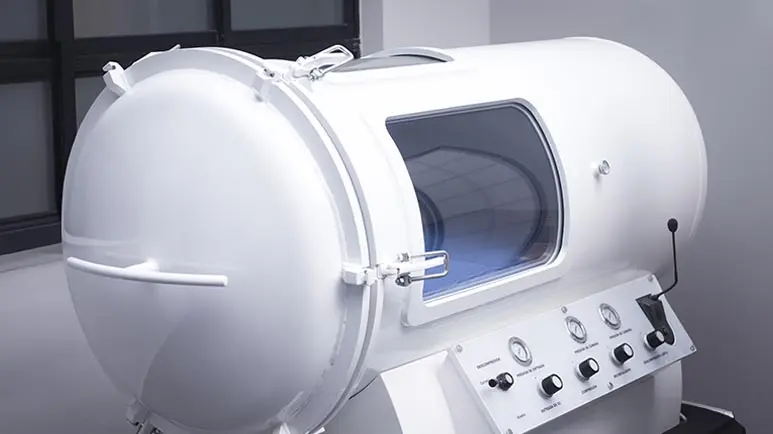Could This New Therapy Save Your Pet’s Life?
Discover the groundbreaking treatment that saved a local cat's life. The results left veterinarians astonished and could be a game-changer for your furry friend. Learn how this innovative approach is offering new hope.

STORY AT-A-GLANCE
- Recently, a fortunate feline in Indiana was saved from fire and smoke injuries with hyperbaric oxygen therapy (HBOT)
- HBOT has been used in human medicine for years to treat a range of conditions including the bends, wounds that won’t heal, gangrene, burns, and even anemia
- HBOT enables the patient’s lungs to gather up to three times more pure oxygen than is normally available, and blood flow delivers that oxygen throughout the body, stimulating the release of natural substances that promote healing
- At the University of Florida Small Animal Hospital, the veterinary staff uses HBOT to treat a variety of animals with injuries and wounds that involve swollen tissue
- HBOT may also benefit animals suffering trauma/swelling, spinal cord injury, arthritis, and urethral inflammation or obstruction
Not long ago, Lincolnway Veterinary Clinic in Mishawaka, Indiana expanded their offering to include a new Pawsitive Integrative Veterinary Care center that offers unique services and therapies to clients and their pets.
Not long after the center opened, a local cat was caught in a garage fire and suffered smoke inhalation. He wound up at the Humane Society and was moved to Lincolnway.
“This was actually our first smoke inhalation case, and it was phenomenal to see the results,” Jennifer Anderson, medical director and owner of the clinic told WNDU news. “So, the cat came in very subdued, very painful, obviously. We couldn’t even register the oxygen levels in the blood when it first came to us.”1
To deliver hyperbaric oxygen therapy to an animal, it’s necessary for clinic staff to go into the chamber with the pet. Staff members who’ve accompanied pets describe the sensation inside the chamber as similar to being on an airplane.
The cat suffering smoke inhalation did two “dives” (treatments) in the chamber about four hours apart. He “fell asleep in the chamber super relaxed, comfortable, and pain-free. So that’s a win for us,” Anderson explained.
After the second treatment, the kitty was moved back to the Humane Society facility where he “started grooming and purring and acting like a normal cat” according to Anderson. At last report, he was in stable condition in the ICU.
HBOT: What It Is and How It Works
Hyperbaric oxygen therapy (HBOT) is widely used in human medicine and has many scientific studies reporting beneficial effects for both humans and animals. However, availability of this treatment remains limited in veterinary patients, so the kitty in Indiana was a very fortunate feline.
Hyperbaric oxygen therapy (HBOT) is the application of supplemental oxygen in a chamber under increased pressure to increase blood oxygen concentration to facilitate healing. Animal patients are placed safely and comfortably in the chamber with 100% oxygen at a pressure 2 times that of normal atmospheric pressure.
This causes the lungs to collect up to three times more pure oxygen than is possible when breathing atmospheric oxygen. The pure oxygen is transported throughout the body via the blood stream, which encourages the release of growth factors and stem cells that promote healing.
According to the University of Florida Small Animal Hospital, which also offers HBOT, treatments average 1.5 hours and are typically given once daily. Like the cat in Indiana, most patients appear calm and relaxed during the treatment, and many fall asleep The total number of treatments and frequency depends on both the patient and his or her condition.2
HBOT delivers a wide range of benefits, including:
- Reduced tissue swelling
- The stimulation of new blood vessel formation into damaged tissue
- Reduced pressure from swelling caused by head or spinal cord injury
- Improved healing
- Improved infection control
Conditions That May Benefit From HBOT
HBOT has been used in human medicine for decades to treat a variety of conditions including:
- Air bubbles in blood vessels (arterial gas embolism)
- Gangrene
- Decompression sickness (“the bends”)
- A skin or bone infection that causes tissue death
- Carbon monoxide poisoning
- Radiation injuries
- Wounds that won’t heal
- Burns
- Crushing injuries
- Severe anemia
- Skin grafts or skin flaps that can cause tissue death
According to UF Health, in animals the following conditions may benefit from HBOT:
- Trauma/swelling: post operative, injuries, snake bites
- Sago palm toxicity
- Smoke inhalation
- Arthritis
- Carbon monoxide toxicity
- Pancreatitis
- Spinal cord injury
- Urethral inflammation or obstruction
- Burn wounds
- Gas bubble disease (aquatic species)
- Non-healing wounds, particularly external wounds where there are concerns about blood supply
How to Find More Information on HBOT
Integrative veterinarian Dr. Lindsay Elam, in a 2020 report for Today’s Veterinary Practice, sums up the benefits and challenges of hyperbaric oxygen therapy in veterinary medicine this way:
“Given HBOT’s safety and wide variety of conditions that could benefit, the major hurdles in clinical veterinary practice are cost, accessibility, and the lack of veterinary clinical trials to guide its evidence-based use for a variety of conditions. Although the modality has seen increased use in the profession,3 only a few clinics, if any, offer it in each state and the average cost of a treatment session is $100 to $200.
The [Veterinary Hyperbaric Association] and Hyperbaric Veterinary Medicine websites include U.S. location maps of veterinary chambers as a resource for owners and veterinarians seeking referral. Given the possible limitations, it is important to discuss the patient’s ongoing HBOT plan in addition to setting realistic goals at the outset.”4











